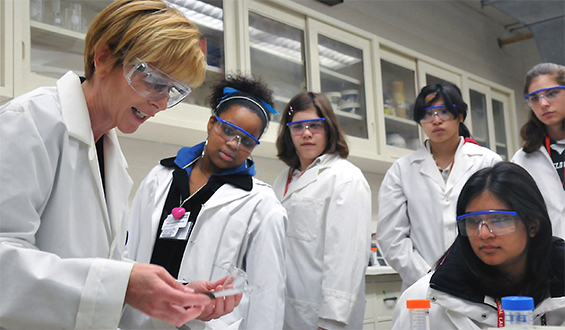Education
Demands Causing Australian Students to Avoid STEM Classes

During the Data61 2016 conference in Sydney last week, educators and representatives of the ICT industry expressed their concern about the slow adoption of STEM subjects in Australian high schools.
According to Australia’s Digital Pulse study quoted by Byron Connolly of CIO, Australia is experiencing a skill crisis with expected gap of about 100,000 ICT professionals between now and 2020. The report, produced by Deloitte Access Economics and the Australian Computer Society, revealed that despite a 5 percent increase in worker demand, the shrinking number of graduates with ICT qualifications will result in a gap in available workers.
Earlier this year, research conducted by Infosys found that young Australians were not prepared for the digital economy of the future. According to Infosys, 50 percent of young Australians think their education did not prepare them for the real working life, and nearly 60 percent of respondents believe those with ICT skills will have a successful career. However, the research also found that although they realize the need to gain new technical skills, young Australians were least interested in improving their STEM knowledge, writes Asha Barbaschow of the ZDnet. Less than a fifth considered developing coding skills or building mobile apps, and only 3.41 percent were willing to work for a startup instead of a large company.
One of the main points of discussion at the Data61 2016 conference was the discrepancy between the classroom curriculum and its industry applications in practice. Laura Johnston, a last-year high school student from Canberra Girls School, commented that most of her peers did not see any practical usage of the STEM subjects taught at school:
“One of the ways to combat this is to show real world applications and show that there are more ways to use these skills later in life.”
Johnston also admitted there was one more important reason students avoided taking STEM classes. Subjects such as math, science required a lot more studying than the humanities-based classes, and it was more difficult to get better ATAR grades. Similar to the U.S. GPA, the Australian Tertiary Admission Rank (ATAR) is the leading admission criteria for most Australian universities. It is provided to students upon graduating from high school as a numerical score between 0 and 100.
Kate Burleigh, Intel managing director for Australia, fully agreed with Johnston, saying that it was up to teachers to give students examples of the real-world applications of STEM subjects. She also pointed out that most of the interesting elements are done in clubs, not in class. For instance, in a space club or coding club, students may clearly see where they can apply their STEM skills and knowledge. “The innovative teaching should not remain only in the clubs,” Burleigh told Holly Morgan of ARN, and that “it should spread in the classroom, too.”
The federal government has already begun paying attention to the issue. In December 2015, it started implementing its AU$ 1.1 billion National Science and Innovation Agenda, and the government has already spent AU$ 51 million in a bid to prepare students for the jobs of the future. The government also granted AU$ 48 million to inspire STEM literacy over five years.
Prime Minister Malcolm Turnbull pushed the idea of the creation of an Entrepreneur Visa during his campaign. He believes that overseas entrepreneurs can have a positive impact on the local tech industry. The consultation process with members of Parliament started in February.
Author information
The post Demands Causing Australian Students to Avoid STEM Classes appeared first on Education News.

Comments (0)